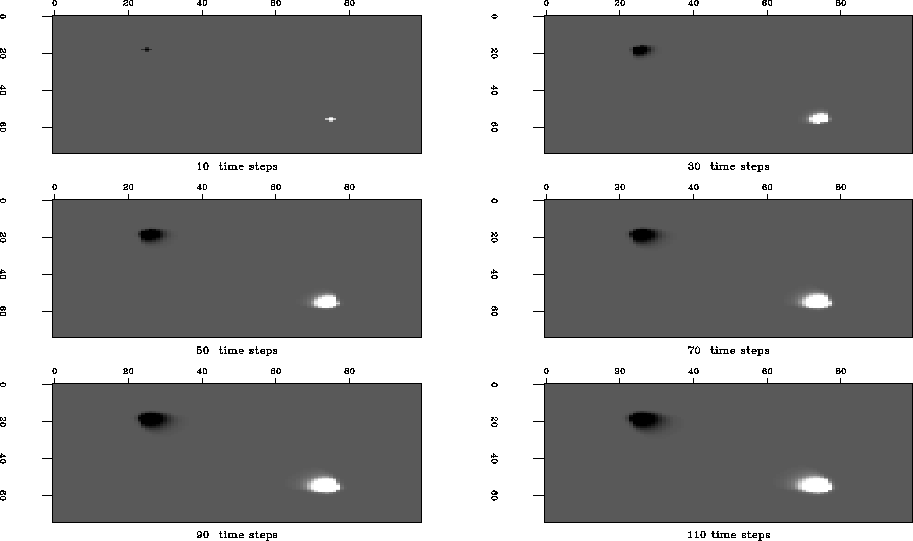|
transmissibility
Figure 2 Transmissibility map of the two-dimensional reservoir. The fluid will flow more rapidly in the elliptic shape in the center of the reservoir. |  |
Figure 2 shows the transmissibility of a first simple reservoir model. The transmissibility is increased in an elliptic area in the center. Such high transmissibility region may be caused by sand deposits within a paleochannel.
|
transmissibility
Figure 2 Transmissibility map of the two-dimensional reservoir. The fluid will flow more rapidly in the elliptic shape in the center of the reservoir. |  |
I chose to drill two wells into the reservoir: each well is located within the high transmissibility area. One of the wells adds fluids (source), the other one extracts fluids (sink). The snapshots in Figure 3 show the areas of increased pressure or fluid density.
 |